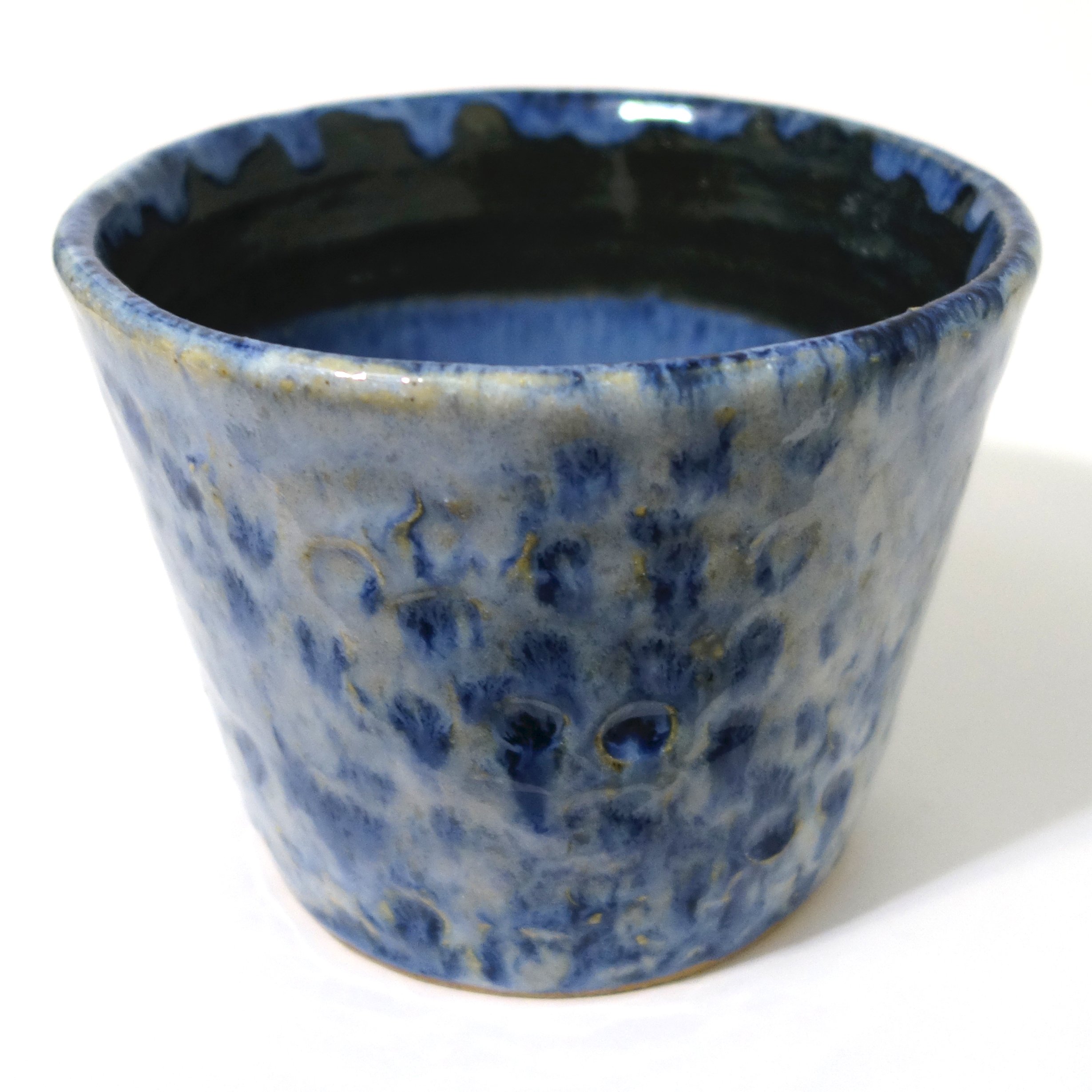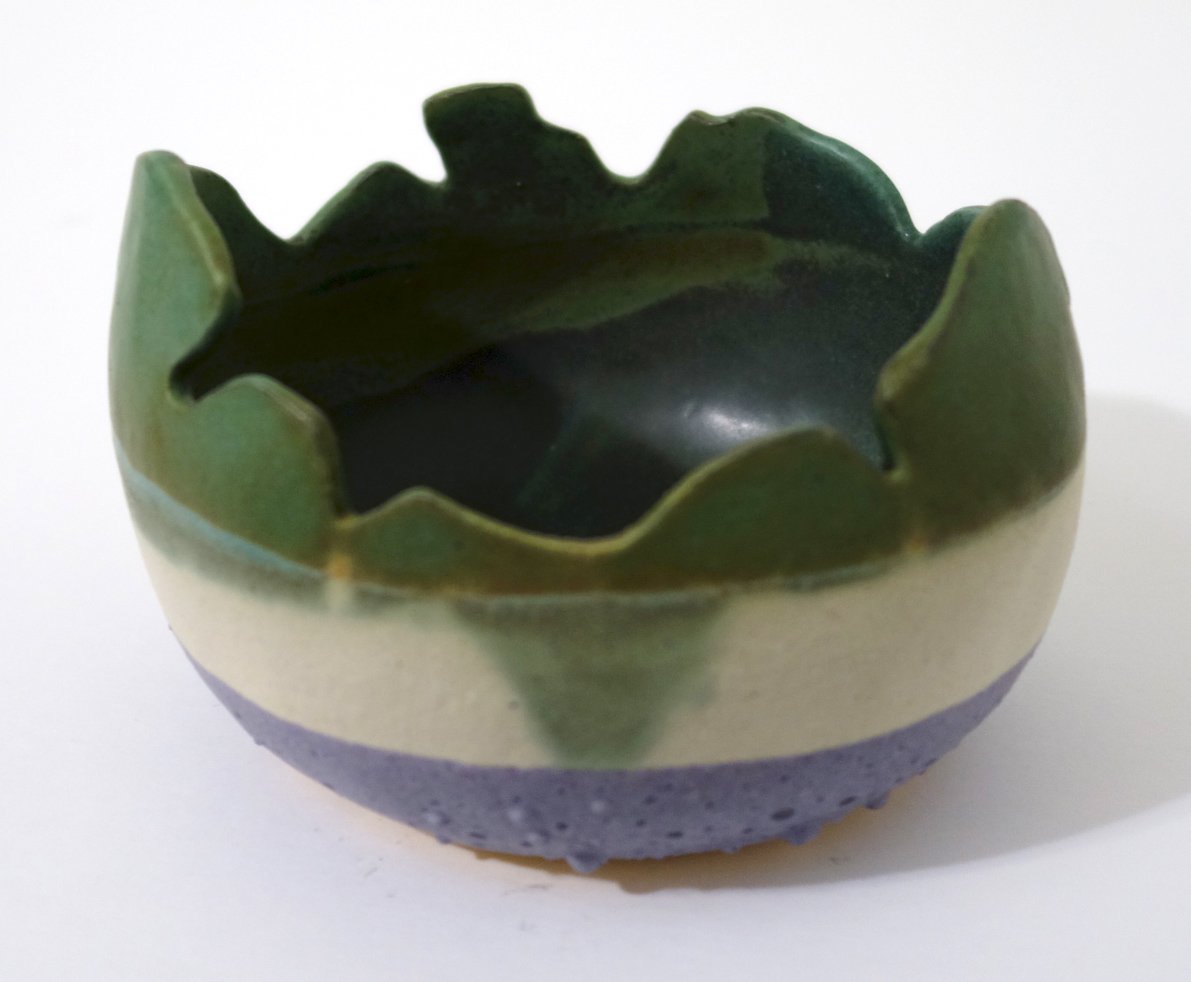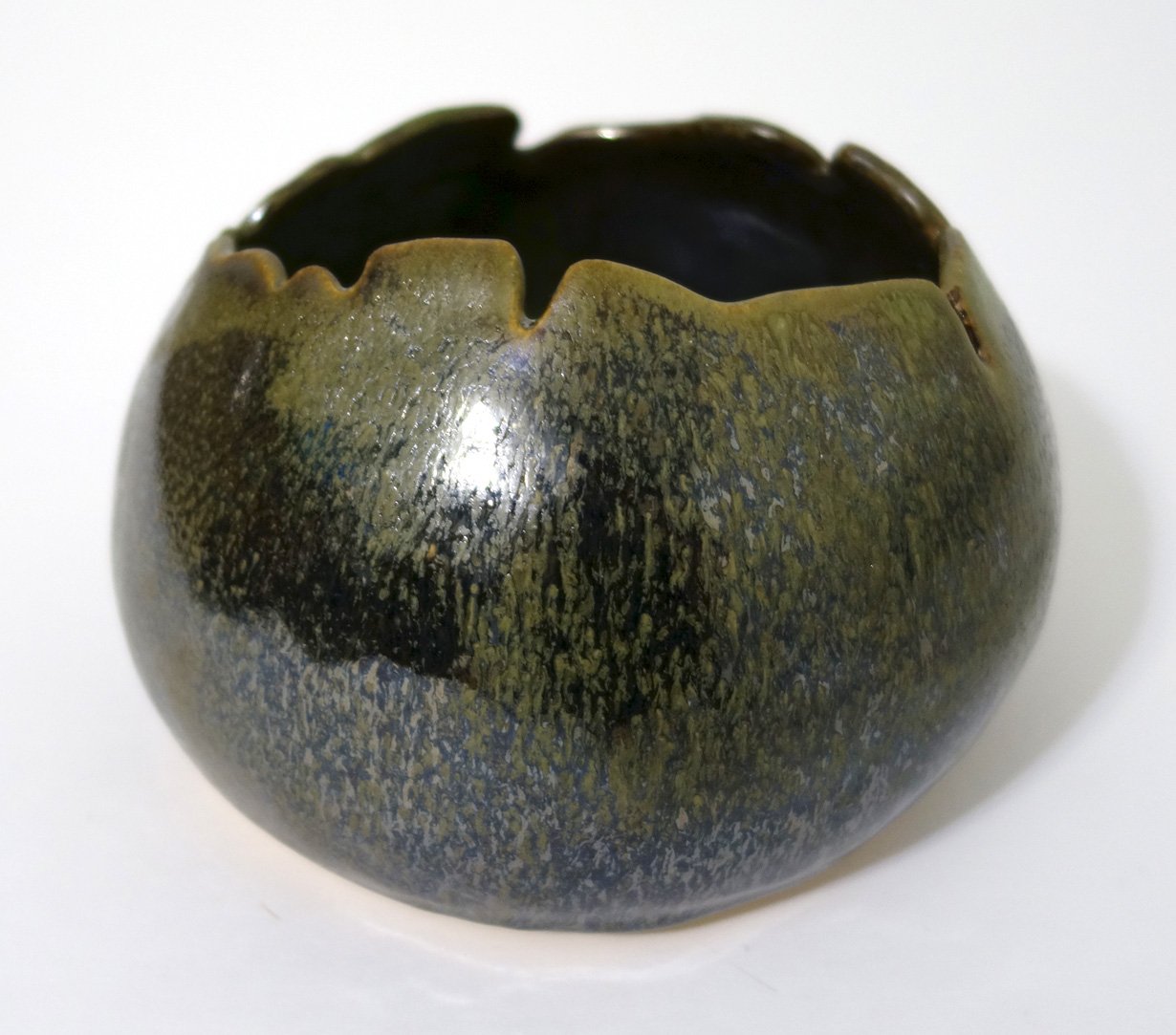When my parents visited this past fall, my mom tried her hand at ceramics! Then at Thanksgiving, she glazed her first piece. She decided to use four different Cone 6 glazes on the small dish - she overlapped Green Tweed, Red Earth and Iron White around the sides, and then filled in the bare central triangle left in the middle with Baby Blue.
Red Earth was a new-to-the-studio glaze that we had recently acquired; it was an old recipe our ceramics faculty Paul Adamson unearthed and wanted to try again. I didn’t imagine it would look very good in combination with Green Tweed, but the overlap on my mom’s dish was small so I figured it wouldn’t matter.
When my mom’s first piece of ceramics came out of the glaze firing, I was really surprised - the overlapped spot of Red Earth over Green Tweed looked metallic and reflective! So far, I’ve only seen that kind of glaze result from raku, and those are somewhat unstable and decorative (not watertight). I was excited to see what this new food-safe stoneware glaze combination would look like on a larger scale, so I tried it out on several pieces! This glaze combination seems somewhat chaotic in terms of its uniformity, density, and reflectiveness, but I’ve always enjoyed the balance that natural chaos can bring to my tight artistic hand.



























